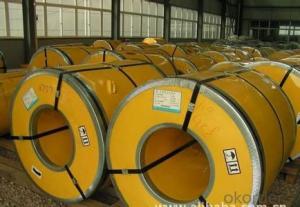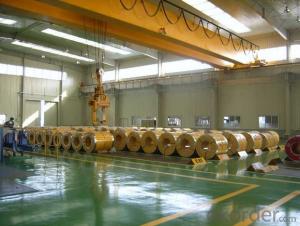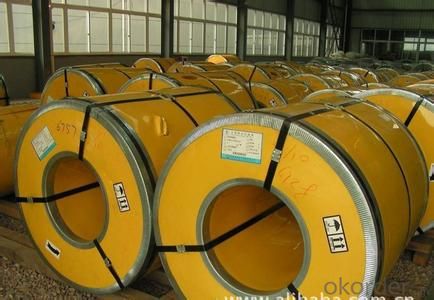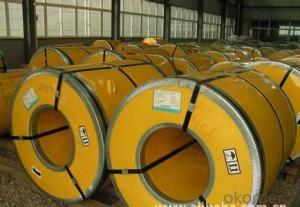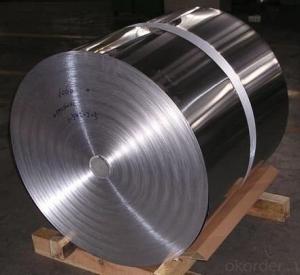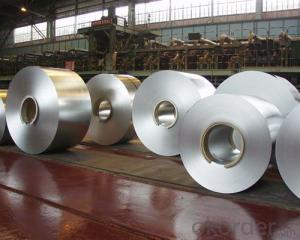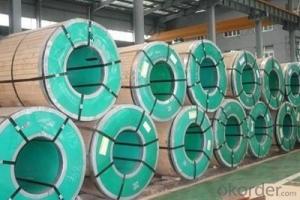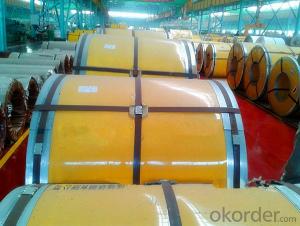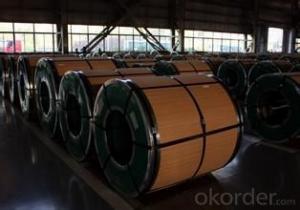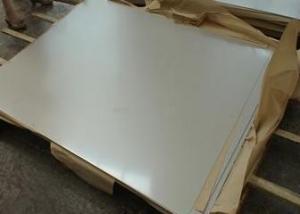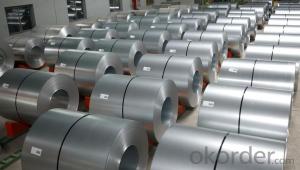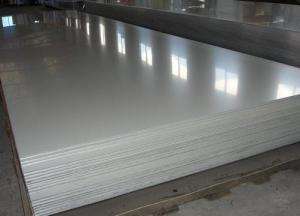Stainless Steel Coil Cold Rolled 201 Full Hard Surface No.2E with High Quality
- Loading Port:
- China main port
- Payment Terms:
- TT or LC
- Min Order Qty:
- 25 m.t.
- Supply Capability:
- 20000 m.t./month
OKorder Service Pledge
OKorder Financial Service
You Might Also Like
1. Structure of Stainless Steel Coil Cold Rolled 201 Descriptions
Stainless Steel 201 is a new kind of Austenite stainless steel by used Mn, N replace Ni.
The steel has good corrosion resistance and hot / cold processing performance, instead of 304 stainless steel products for used in the not high of corrosive environment, such as indoor, inland city outdoor etc.
2. Main Features of the Stainless Steel Coil Cold Rolled 201
Thickness: 0.2mm to 1.5mm
Width: 10mm to 1240mm
Type: 200 Series
Length: As customer's requested
Standard: JIS, SUS, AISI, ASTM
Grade: 201-J1, 201-J4, AISI201, AISI202…
Finish: BA, 2B, 8K, NO.3, NO.4, HL…
Hardness: Low Hard(190 HV Max); Half Hard(240-280HV); Full Hard(42-60 HRC)
Delivery Time: 15 to 20 day after the receive the deposit or 100%LC
Packaging: By wooden pallet, wooden case or according to customer's request
3. Stainless Steel Coil Cold Rolled 201 Images
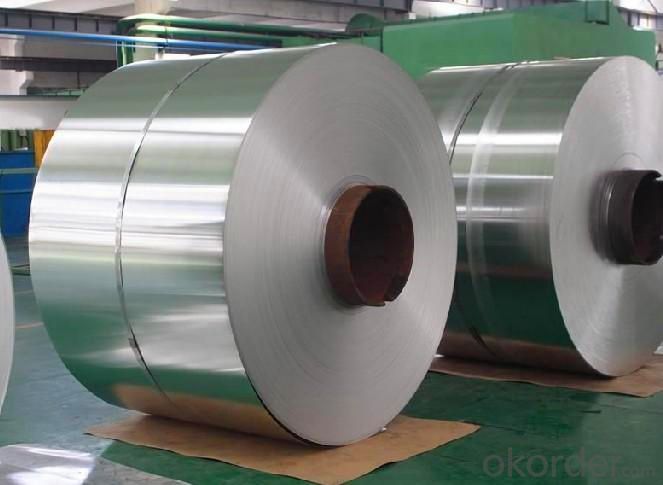
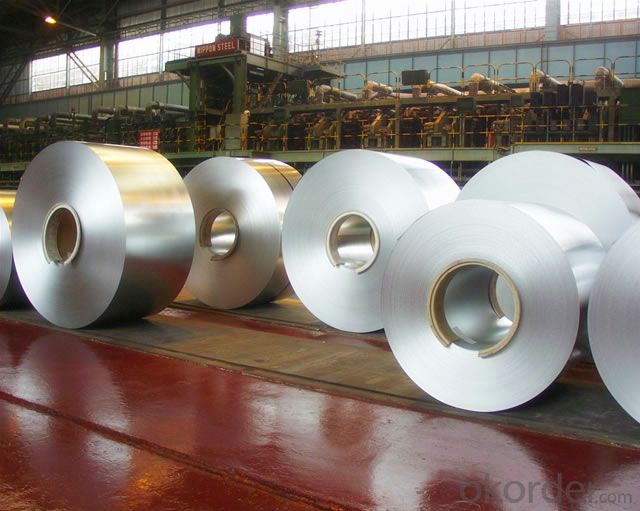
4. Stainless Steel Coil Cold Rolled 201 Specifications
Mechanical Property Contrast | YS (Mpa) | TS (Mpa) | EL(%) | HV | REMARK |
Stainless Steel 201 | 426 | 880 | 52 | 224 | 1.0t |
Stainless Steel 304 | 285 | 710 | 58 | 165 | 1.0t |
Stainless Steel 200 Series Chemicals Contrast (wt. %) | ||||||||
Chemicals | C | Si | Mn | Cr | Ni | N | Other | |
205 | 0.12-0.25 | ≤0.75 | 14.0-15.0 | 16.5-18.0 | 1.0-1.75 | 0.32-0.4 | ||
JIS, | 201 | ≤0.15 | ≤1.0 | 5.5-7.5 | 16.0-18.0 | 3.5-5.5 | ≤0.25 | - |
201L | ≤0.03 | ≤0.75 | 5.5-7.5 | 16.0-18.0 | 3.5-5.5 | ≤0.25 | - | |
202 | ≤0.15 | ≤1.0 | 7.5-10.0 | 17.0-19.0 | 4.0-6.0 | ≤0.25 | - | |
201LN | ≤0.03 | ≤0.75 | 6.4-7.5 | 16.0-17.5 | 4.0-5.5 | 0.1-0.25 | Cu≤1.0 | |
India | 201-J1 | ≤0.08 | ≤0.75 | 7.0-8.0 | 15.0-17.0 | 4.0-5.0 | ≤0.1 | Cu≤1.5 |
201-J3 | ≤0.08 | ≤0.75 | 9.0-10.5 | 14.0-16.0 | 2.0-3.0 | ≤0.15 | Cu≤2.0 | |
201-J4 | ≤0.10 | ≤0.75 | 8.5-10.0 | 15.0-16.0 | ≤1.2 | ≤0.2 | Cu≤2.0 | |
America | 204 | ≤0.03 | ≤1.0 | 7.0-9.0 | 15.0-17.0 | 1.5-3.0 | 0.15-0.3 | (Cu) |
H400 | ≤0.10 | ≤1.0 | 6.0-9.0 | 17.0-19.5 | ≤3.5 | ≤0.3 | - | |
Japan | YUS130S | 0.09 | 0.5 | 11.0 | 18.0 | 6.5 | 0.35 | - |
NTK S-4 | 0.17 | 0.43 | 14.7 | 17.7 | 1.3 | 0.35 | - | |
NM15M | 0.08 | 0.8 | 14.5 | 17.0 | 4.3 | 0.33 | - | |
Europe America | 219 | ≤0.04 | ≤0.75 | 8.0-10.0 | 19.0-21.5 | 5.5-7.5 | 0.15-0.4 | - |
Cromanite | ≤0.08 | ≤1.0 | 9.5-11.0 | 18.0-20.0 | ≤1.0 | 0.4-0.6 | - | |
201 Surface | Characteristic and Application of Stainless Steel Coil Cold Rolled 201 |
2B | The surface brightness and flatness of 2B is better than 2D then through a special surface treatment to improve its mechanical properties, 2B could nearly Satisfy comprehensive uses |
No.4 | Polished with abrasive belt of grit#150#180, have better brightness with discontinuous coarse stria, but thinner than NO.3, are used as bathtub buildings inner and electrical appliances kitchen utensils and food processing. |
BA | Cold rolled, bright annealed and skin-passed, the product have excellent brightness like mirror kitchen apparatus, etc. |
8K | The product have excellent brightness and prefer bright can be the mirror. |
5. FAQ of Stainless Steel Coil Cold Rolled 201
Q: Are you factory or trader?
A: We certainly are stainless steel manufacturer and have processing plant.
Q: Can you provide mill test certificate?
A: Yes! Mill test certificate for both hot rolled raw material coils and cold rolled coils are available.
Q: How to get a sample?
A: Free samples are available for your checking and testing. And to get free samples, please send us your detailed receiving address (including post code) and your DHL/FEDEX/UPS account for collecting samples, courier cost will be paid in your side.
- Q: What is the electrical conductivity of stainless steel strips?
- The electrical conductivity of stainless steel strips may vary depending on the specific type and composition of stainless steel. In general, stainless steel is not as conductive as metals such as copper or aluminum. This is mainly due to stainless steel's higher resistance to the flow of electric current. However, there are stainless steel alloys that have been specially formulated to improve electrical conductivity. These alloys often contain higher amounts of elements like nickel or copper, which enhance the material's conductivity. It is important to consider that factors like temperature, surface condition, and strip thickness can also affect the electrical conductivity of stainless steel. Therefore, it is recommended to refer to specific data or consult with manufacturers to obtain accurate information regarding the electrical conductivity of stainless steel strips.
- Q: What is the thickness range of stainless steel strips?
- The thickness range of stainless steel strips can vary depending on the specific application and requirements. Generally, stainless steel strips are available in thicknesses ranging from 0.02 millimeters to 5 millimeters. However, it is important to note that custom thicknesses can also be manufactured to meet specific needs. The selection of the appropriate thickness depends on factors such as the intended use, structural requirements, and desired aesthetics.
- Q: Stainless steel strap easy to scrape, how to deal with?
- They use sandpaper to repair scratches watchcase watchband above, is not difficult, as long as careful steady hand could do; but for the surface polishing process, it must use the polishing machine, ordinary people can not do.
- Q: Are 111 stainless steel strips suitable for automotive exhaust systems?
- Yes, 111 stainless steel strips are suitable for automotive exhaust systems. Stainless steel is a popular choice for exhaust systems due to its high resistance to heat, corrosion, and rust. The grade 111 stainless steel, also known as AISI 111, offers excellent ductility, strength, and weldability, making it a suitable material for automotive exhaust systems. It can withstand the extreme temperatures and harsh conditions that exhaust systems are exposed to, ensuring long-lasting performance and durability. Additionally, stainless steel strips are easy to shape and form, allowing for precise fabrication and customization according to the specific requirements of the exhaust system design. Overall, 111 stainless steel strips provide the necessary properties and characteristics to meet the demands of automotive exhaust systems.
- Q: Can stainless steel strips be used for automotive suspension components?
- Automotive suspension components can indeed utilize stainless steel strips. Renowned for its remarkable strength, resistance to corrosion, and durability, stainless steel proves to be a fitting material for diverse automotive uses, including suspension components. Springs, brackets, and other crucial parts necessary for the suspension system can be efficiently manufactured using stainless steel strips. These components must endure substantial loads, vibrations, and exposure to varying environmental conditions, and stainless steel's properties establish it as a dependable choice for such rigorous applications. Furthermore, the corrosion resistance of stainless steel guarantees an extended lifespan for suspension components, even in the face of harsh conditions. Thus, stainless steel strips present a practical alternative for automotive suspension components.
- Q: Are stainless steel strips suitable for food processing?
- Yes, stainless steel strips are suitable for food processing. Stainless steel is highly resistant to corrosion, heat, and chemicals, making it a durable and hygienic material for food processing equipment. It is easy to clean, non-reactive, and does not impart any taste or odor to the food being processed.
- Q: What are the physical properties of stainless steel strips?
- Stainless steel strips have become a favored choice in many industries due to their distinct physical properties. To begin with, they are renowned for their durability and strength. This material possesses exceptional tensile strength, enabling it to withstand heavy loads and resist deformation or breakage. Another key physical property of stainless steel strips is their resistance to corrosion. They are specifically engineered to resist oxidation and corrosion, rendering them ideal for applications involving exposure to moisture, chemicals, or harsh environments. Even in corrosive conditions, stainless steel strips can maintain their integrity and appearance, reducing the need for frequent maintenance or replacement. Furthermore, stainless steel strips boast a high melting point, contributing to their overall strength and heat resistance. This characteristic makes them well-suited for applications involving high temperatures, such as those found in the automotive, aerospace, or manufacturing industries. Additionally, stainless steel strips exhibit excellent conductivity. They can efficiently conduct heat and electricity, making them suitable for applications that require efficient heat transfer or electrical conduction, such as in the construction of appliances, electrical enclosures, or heat exchangers. Moreover, stainless steel strips possess a visually appealing appearance due to their smooth and lustrous surface. This quality makes them highly sought after in architectural and decorative applications where aesthetics play a crucial role. In conclusion, the physical properties of stainless steel strips, including their strength, corrosion resistance, high melting point, excellent conductivity, and visually appealing appearance, make them versatile and widely utilized in various industries, including construction, automotive, aerospace, and manufacturing.
- Q: What is the tensile strength after annealing of stainless steel strips?
- Various factors, including the specific grade of stainless steel, the parameters of the annealing process, and the intended application of the strips, influence the tensile strength of stainless steel strips after annealing. Annealing is a heat treatment process that involves subjecting the stainless steel strips to a specific temperature and gradually cooling them in order to modify their microstructure and enhance their mechanical properties. For stainless steel, annealing serves to alleviate internal stresses, increase ductility, and improve resistance to corrosion. In general, stainless steel strips tend to exhibit improved tensile strength after annealing compared to their initial state. However, the actual tensile strength achieved after annealing will vary depending on the factors mentioned above, especially the grade of stainless steel. Different grades of stainless steel possess distinct chemical compositions and mechanical properties, which affect their response to annealing. It should be noted that the annealing process must be carefully controlled to prevent excessive softening or grain growth, as these can result in a reduction in tensile strength. The specific annealing parameters, such as temperature, duration, and cooling rate, must be optimized to achieve the desired combination of tensile strength, ductility, and other mechanical properties. Ultimately, determining the tensile strength of stainless steel strips after annealing requires considering the specific grade of stainless steel, the parameters of the annealing process, and conducting suitable mechanical tests. Seeking advice from metallurgical experts or referring to technical specifications provided by stainless steel manufacturers can provide more precise information regarding the expected tensile strength after annealing for a particular grade of stainless steel.
- Q: Can stainless steel strips be used in the production of jewelry findings?
- Yes, stainless steel strips can be used in the production of jewelry findings. Stainless steel is often used in jewelry making due to its durability, corrosion resistance, and affordability. It can be formed into various shapes and sizes, making it suitable for creating findings such as clasps, jump rings, earring hooks, and more.
- Q: Are stainless steel strips resistant to scaling and oxidation?
- Yes, stainless steel strips are resistant to scaling and oxidation. This is due to the high levels of chromium present in stainless steel, which forms a protective layer on the surface of the material. This layer, known as a passive film, prevents the steel from reacting with oxygen in the air and helps to prevent corrosion and scaling. Additionally, stainless steel also contains other alloying elements such as nickel and molybdenum, which further enhance its resistance to oxidation and scaling. Therefore, stainless steel strips are widely used in various industries where corrosion resistance is crucial, such as in the manufacturing of kitchen appliances, automotive parts, and chemical processing equipment.
Send your message to us
Stainless Steel Coil Cold Rolled 201 Full Hard Surface No.2E with High Quality
- Loading Port:
- China main port
- Payment Terms:
- TT or LC
- Min Order Qty:
- 25 m.t.
- Supply Capability:
- 20000 m.t./month
OKorder Service Pledge
OKorder Financial Service
Similar products
Hot products
Hot Searches
Related keywords
